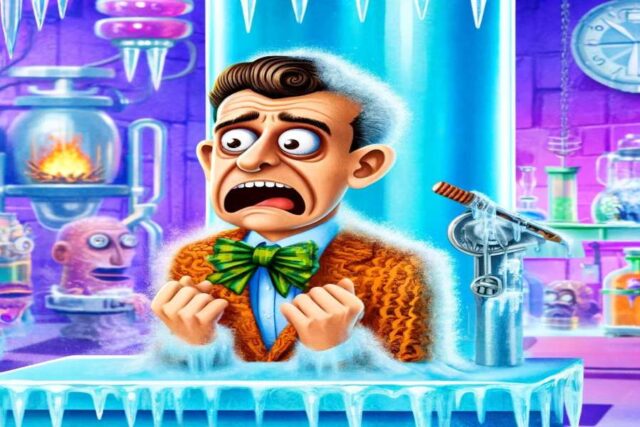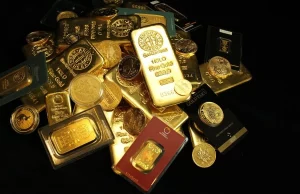The enduring rumor that Walt Disney, the creative genius behind the beloved Disney empire, chose to freeze himself in hopes of a future revival has captivated imaginations for decades. Despite Disney’s monumental influence and lasting legacy in entertainment, this myth continues to intrigue many.
The story suggests that upon his death in 1966, Disney’s body was cryogenically preserved to await a future where he could be revived. This article delves into the origins of this fascinating myth, examining why and when it began, how it has persisted over the years, and the scientific realities of cryogenics. We also explore the impact of this myth on popular culture and reflect on Walt Disney’s true legacy, urging readers to appreciate his genuine contributions rather than fantastical rumors.
Did Walt Disney Freeze Himself?
No, Walt Disney did not freeze himself. The myth that he was cryogenically preserved after his death in 1966 is purely a fabrication. Walt Disney died of lung cancer on December 15, 1966, and his body was cremated two days later. He was interred at Forest Lawn Memorial Park in Glendale, California. The rumor likely started due to the mid-20th century fascination with cryogenics and Disney’s interest in futuristic themes, which fueled public imagination. Despite its persistence in popular culture, no evidence supports the idea that Disney opted for cryogenic preservation. The myth has been debunked by credible sources, including Disney’s family and biographers. Instead of focusing on this unfounded legend, it’s more meaningful to appreciate Walt Disney’s real legacy: his groundbreaking work in animation, theme parks, and entertainment that inspires millions worldwide.
When Did the Rumor Start?
The myth of Walt Disney freezing himself began due to cultural fascination with cryogenics and Disney’s reputation as a visionary. During the mid-20th century, there was a significant public interest in futuristic technology and the possibilities presented by scientific advancements. Disney’s work, particularly his innovative projects and futuristic themes, contributed to the plausibility of the myth. His secretive nature and the suddenness of his death further fueled speculation and curiosity.
The rumor that Walt Disney froze himself started almost immediately after his death on December 15, 1966. Within days, whispers and speculative stories began to circulate, spurred by the dramatic nature of the claim and the lack of detailed information about his final moments. Disney’s high profile and sensational idea of cryogenic preservation combined to create a perfect storm for the rumor to spread rapidly.
Media reports amplified Disney’s rumor of cryogenic preservation, blending fact with fiction, and gaining traction in newspapers and magazines, cementing the myth despite lack of credible evidence.
The rumor’s persistence can be attributed to the intriguing nature of the claim and its alignment with Disney’s persona. As a man known for pushing the boundaries of technology and imagination, the idea of Disney choosing cryogenic preservation seemed fitting to many. This alignment between his public image and the futuristic concept of cryogenics made the myth particularly compelling and enduring.
The rumor that Walt Disney froze himself after his death, fueled by cryogenics, media amplification, and Disney’s visionary reputation, has persisted over the decades, highlighting the impact of sensational stories.
Walt Disney’s Actual Death and Burial
Walt Disney, the creative genius behind the Disney empire, passed away on December 15, 1966, from complications related to lung cancer. Here are the details surrounding his death and burial.
Walt Disney’s Cause of Death
Walt Disney battled lung cancer for several months before succumbing to the disease. Diagnosed in November 1966, Disney underwent surgery to remove a lung tumor. Despite the surgery, his condition worsened, leading to his death a month later. His death at age 65 marked the end of an era for the entertainment industry, leaving a lasting legacy through his groundbreaking work in animation and theme parks.
Final Moments and Family
Disney spent his final days at St. Joseph’s Hospital in Burbank, California, surrounded by close family members. His death was a profound loss for his family and the countless fans who admired his work. Despite his declining health, Disney remained involved in his projects until the very end, demonstrating his unwavering dedication to his creative vision.
Cremation and Burial
Following his death, Walt Disney was cremated on December 17, 1966. His ashes were interred at Forest Lawn Memorial Park in Glendale, California. The burial site, located in the Court of Freedom section, remains a place of tribute for fans and admirers who visit to pay their respects to the legendary creator.
Legacy and Myths
Walt Disney’s legacy extends far beyond his death, with his influence still evident in modern entertainment. Despite persistent myths, such as the rumor of his cryogenic preservation, Disney’s actual burial was conventional. These myths continue to intrigue the public, but the truth of his final resting place underscores the reality of his human experience. Celebrating Disney’s real achievements and contributions offers a more meaningful tribute to his enduring impact on the world.
Why Do People Continue to Believe in the Myth?
The myth that Walt Disney froze himself continues to captivate imaginations decades after his death. Despite clear evidence debunking the story, many people still believe it. Several factors contribute to the persistence of this myth, ranging from psychological tendencies to cultural influences and media amplification.
Psychological Fascination with Immortality: The myth of cryogenic preservation reflects human fascination with immortality, offering a glimpse into the possibility of a future revival and overcoming death.
Disney’s Visionary Persona: Walt Disney, known for his innovative spirit and groundbreaking technology, is often associated with cryogenic preservation despite the myth that he opted for this method.
Media Amplification: The media perpetuates myths, such as Disney’s cryogenic frozen status, through sensational stories, movies, books, and internet discussions, solidifying the story in public consciousness and making it difficult to dispel.
Lack of Awareness: Misinformation and rumors about Walt Disney’s death and burial often fill gaps in public knowledge, leading to the persistence of mysterious and fantastical myths.
Cultural Icon Status: Misinformation and rumors about Walt Disney’s death and burial often fill gaps in public knowledge, leading to the persistence of mysterious and fantastical myths.
Influence of Science Fiction: Science fiction often delves into cryogenic preservation and life extension, blurring the lines between fiction and reality leading to misconceptions about advanced technologies.
Desire for Mystery and Magic: Walt Disney’s brand, known for magic and wonder, utilized a fantastical preservation method to enhance the myth’s appeal and longevity by adding mystery to heroes’ lives.
Skepticism Towards Official Narratives: Walt Disney’s brand, known for magic and wonder, utilized a fantastical preservation method to enhance the myth’s appeal and longevity by adding mystery to heroes’ lives.
Romanticization of Technological Hope: Walt Disney’s brand, known for magic and wonder, utilized a fantastical preservation method to enhance the myth’s appeal and longevity by adding mystery to heroes’ lives.
What is Walt Disney’s True Legacy?
Walt Disney’s true legacy transcends myths and rumors, leaving an indelible mark on entertainment, culture, and technology. He revolutionized the animation industry with groundbreaking works like “Steamboat Willie” and “Snow White and the Seven Dwarfs,” setting new standards in storytelling and animation. His creation of iconic characters such as Mickey Mouse, Donald Duck, and Goofy, along with beloved films like “Cinderella” and “The Lion King,” has become integral to global culture.
Disney’s vision extended to immersive experiences with the creation of Disneyland in 1955, the first theme park of its kind. This success led to Disney World and other parks worldwide redefining themed entertainment. His relentless innovation included advancements in animation technology, audio-animatronics, and significant contributions to television.
Beyond entertainment, Disney’s influence shapes childhood memories and family traditions globally, symbolizing imagination, creativity, and the power of dreams. His legacy continues to inspire and entertain new generations, cementing his place as one of the most influential figures in modern history. Disney’s impact is a testament to his creativity, innovation, and cultural significance.
Why Should We Focus on Walt Disney’s Real Achievements Rather Than Myths?
- Inspiration and Innovation: Disney’s achievements showcase his remarkable creativity and innovative spirit, which inspire future generations.
- Cultural Impact: His contributions to animation, film, and theme parks have significantly shaped global culture, leaving a lasting legacy.
- Educational Value: Understanding his true accomplishments provides valuable lessons in perseverance, vision, and the impact of technological advancements.
- Historical Accuracy: Focusing on factual achievements preserves the integrity of his legacy and ensures an accurate historical record.
- Celebrating Genuine Success: Honoring Disney’s real successes highlights the true extent of his influence and celebrates his genuine contributions to entertainment and culture.
Conclusion
Focusing on Walt Disney’s real achievements rather than myths allows us to appreciate his profound impact on the world. His innovations in animation and storytelling, creation of beloved characters and films, development of groundbreaking theme parks, and relentless pursuit of technological advancement all contribute to his lasting legacy.
By celebrating these genuine accomplishments, we preserve the integrity of his contributions and draw inspiration from his visionary spirit and dedication. Understanding Disney’s true legacy helps us recognize the depth of his influence on global culture and the enduring power of creativity and imagination.














